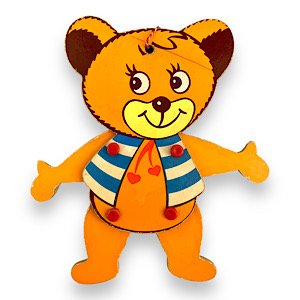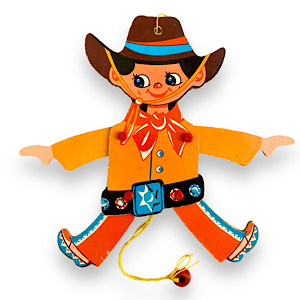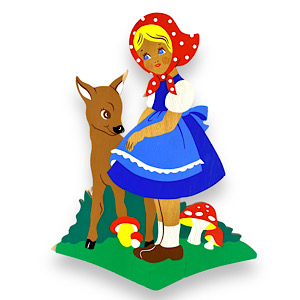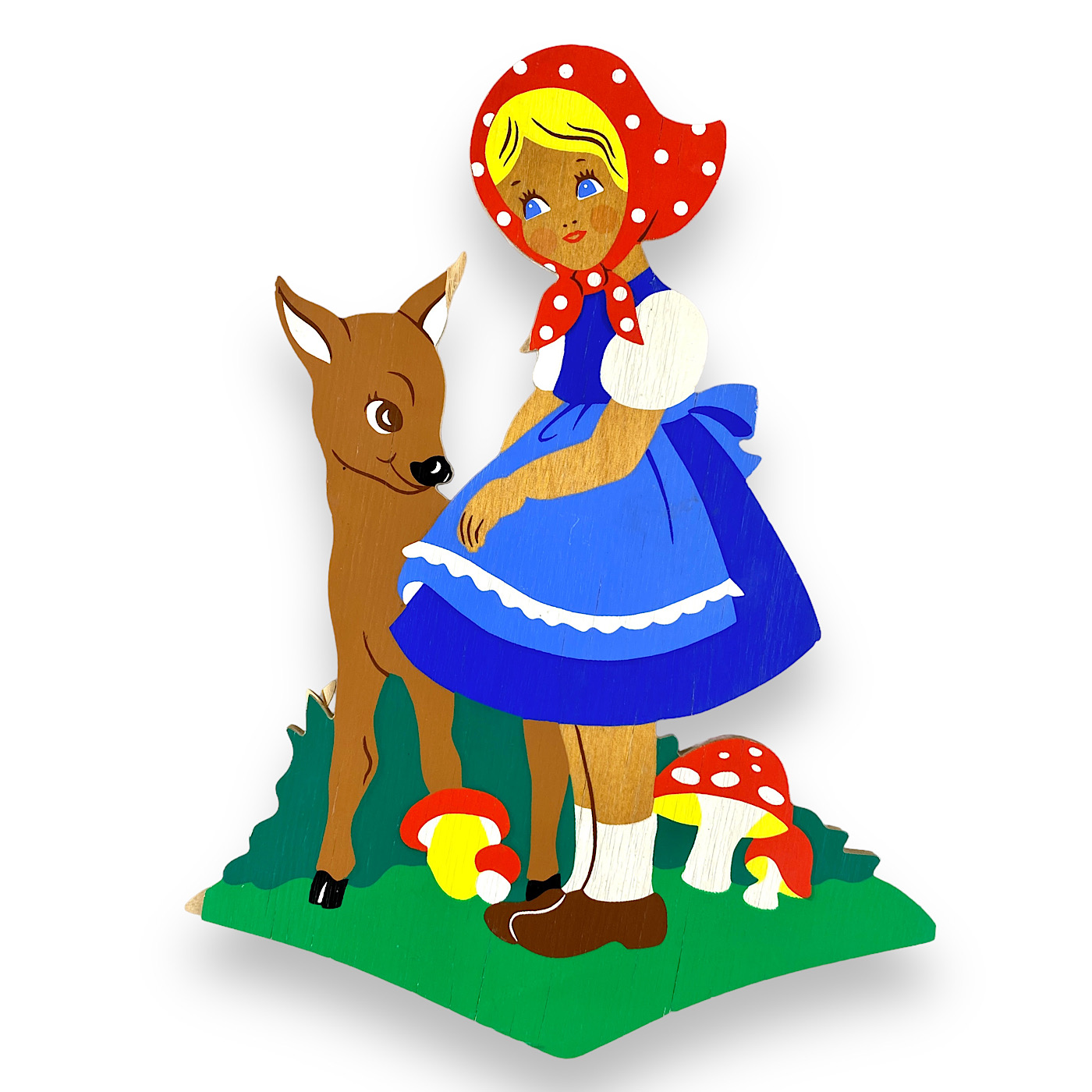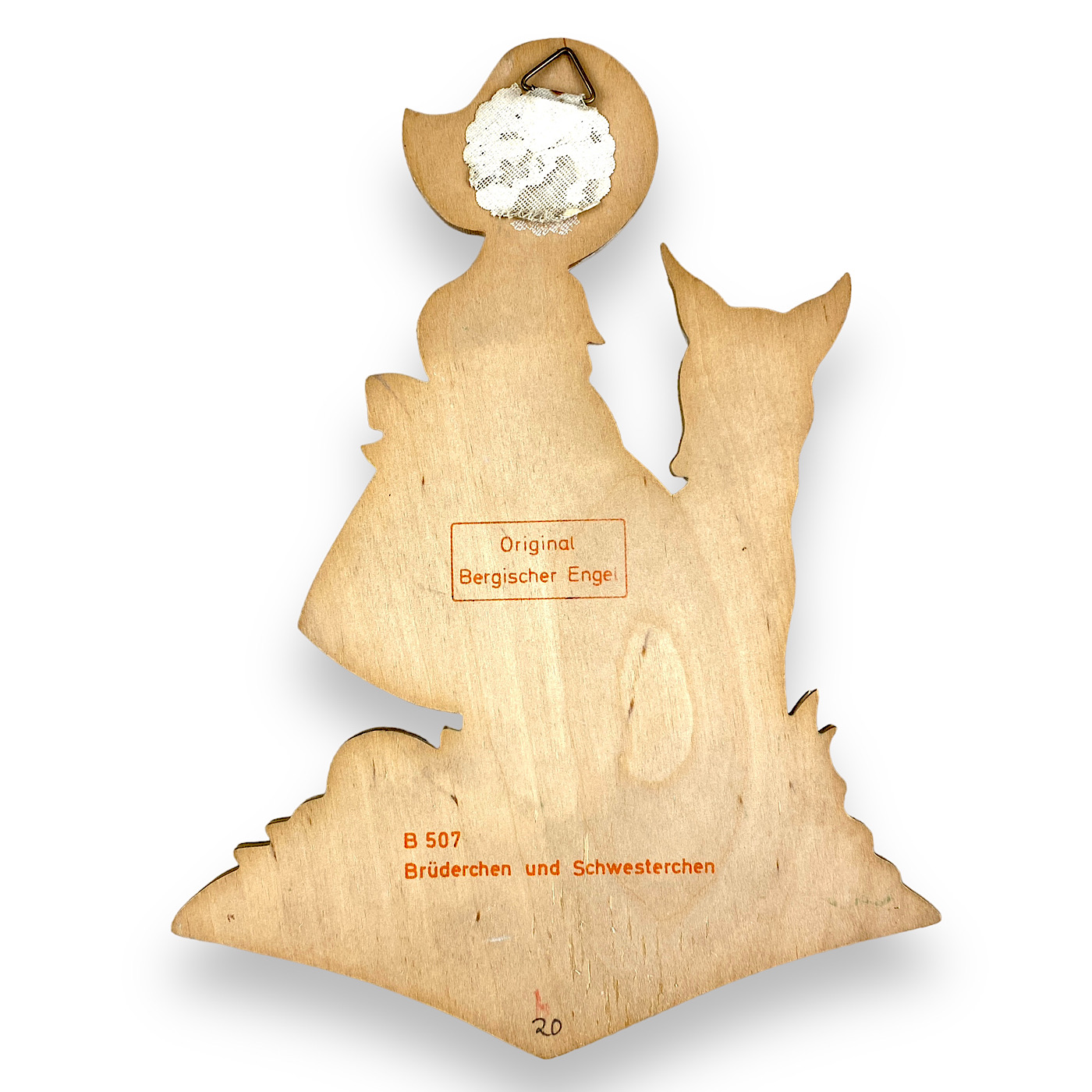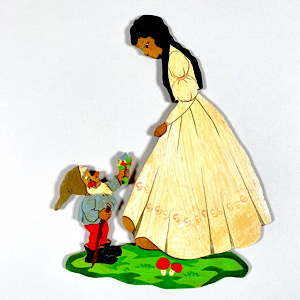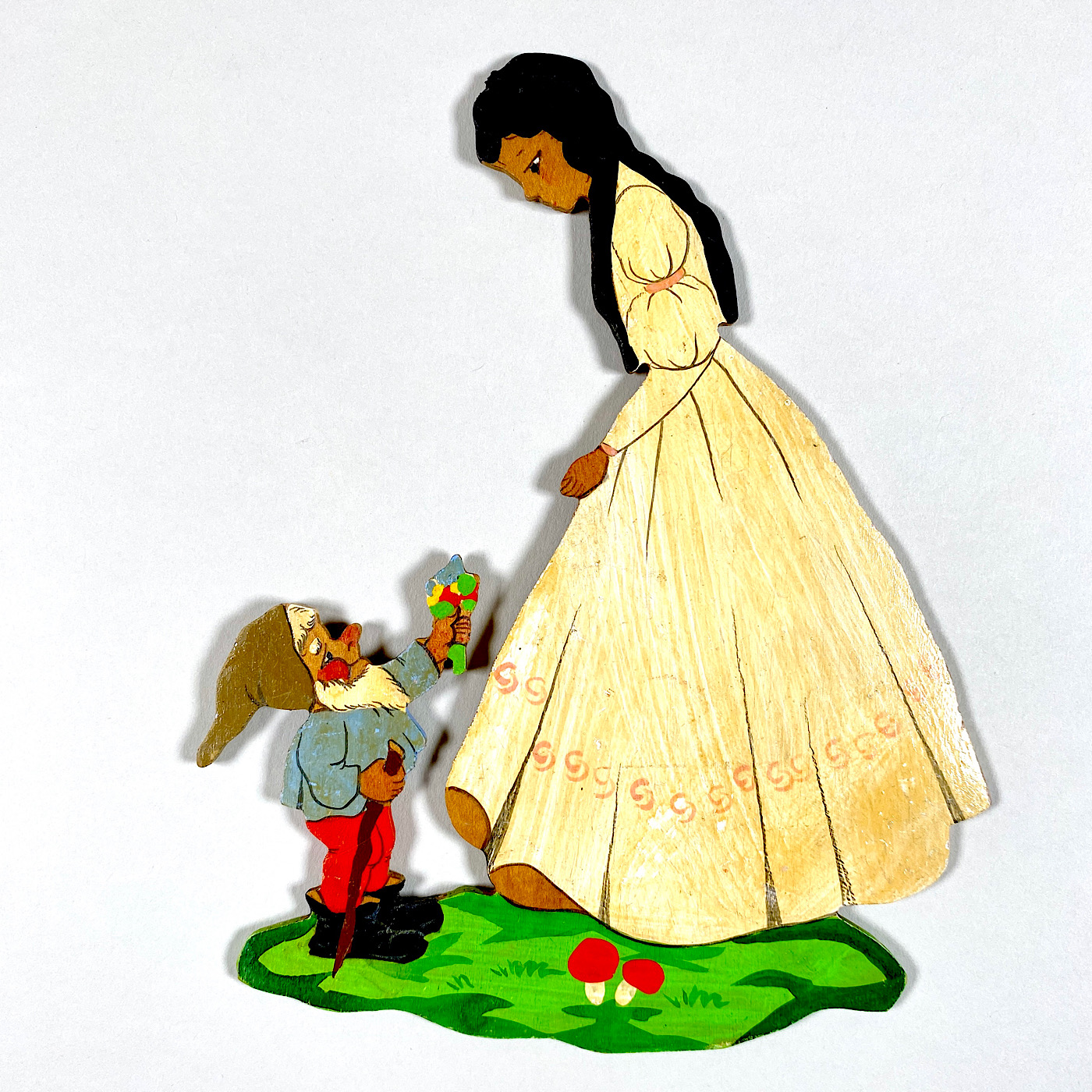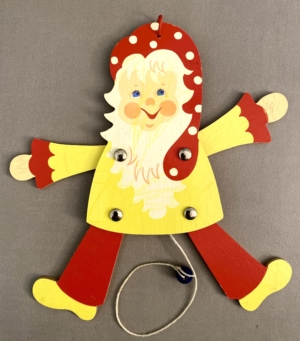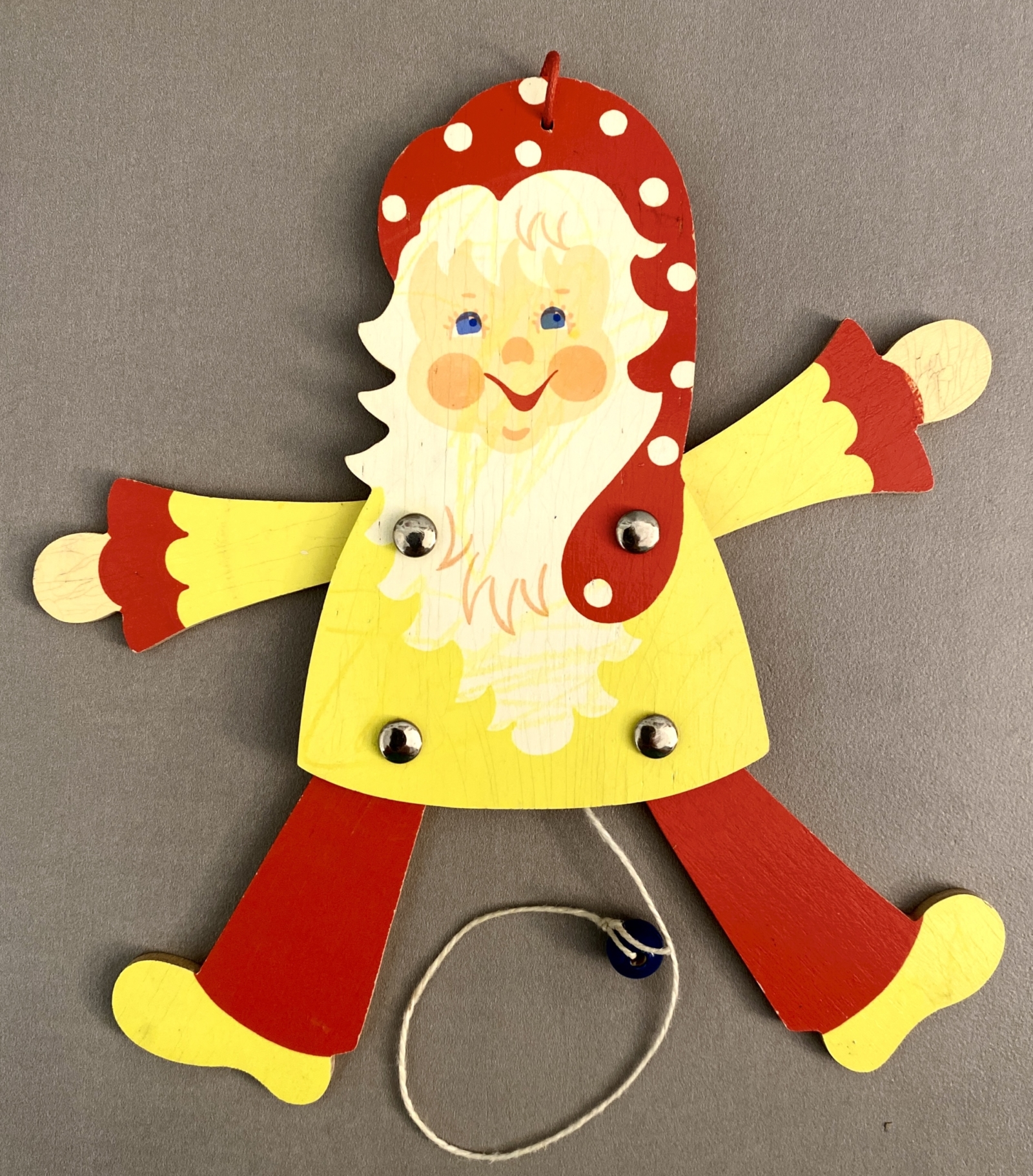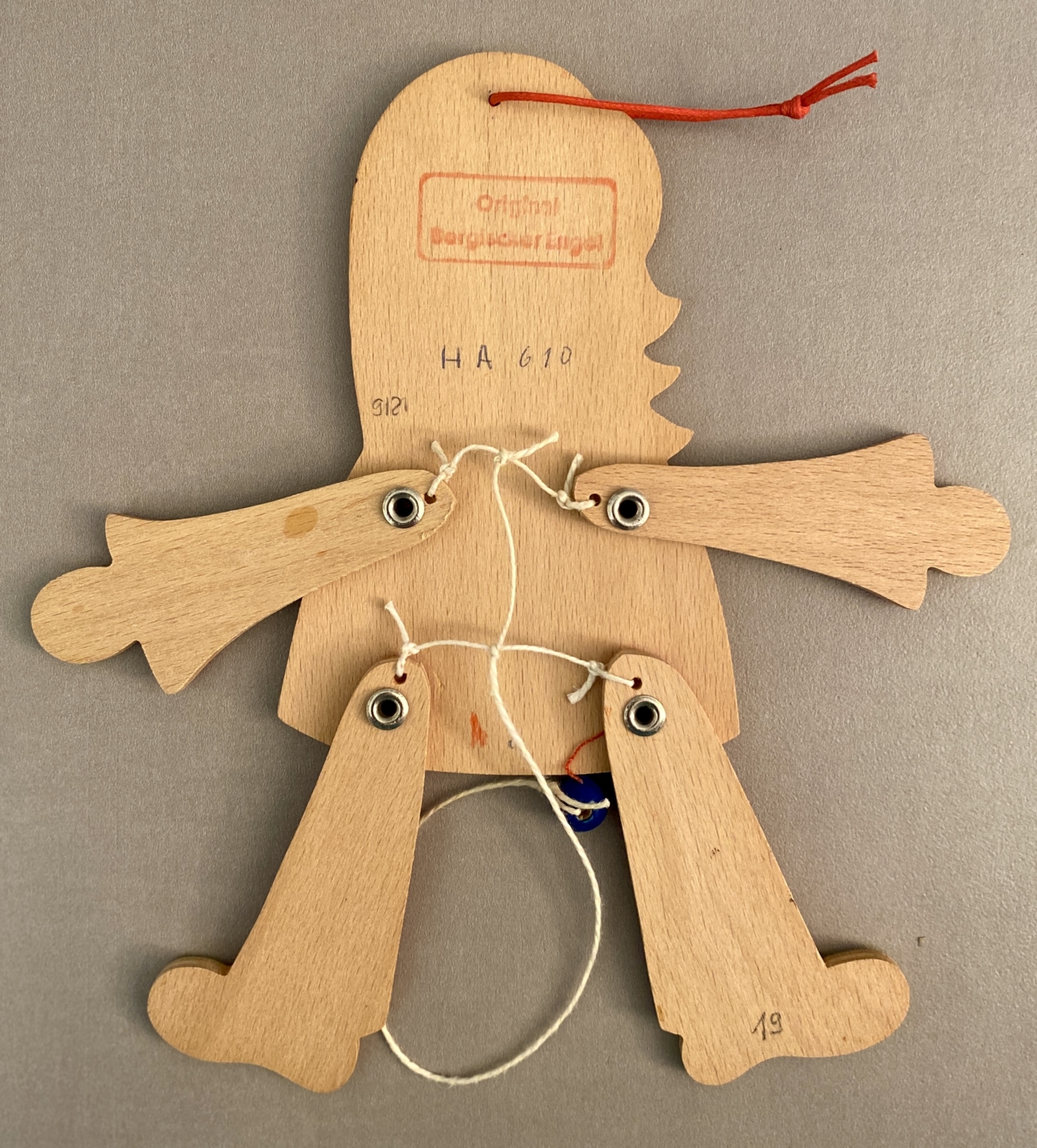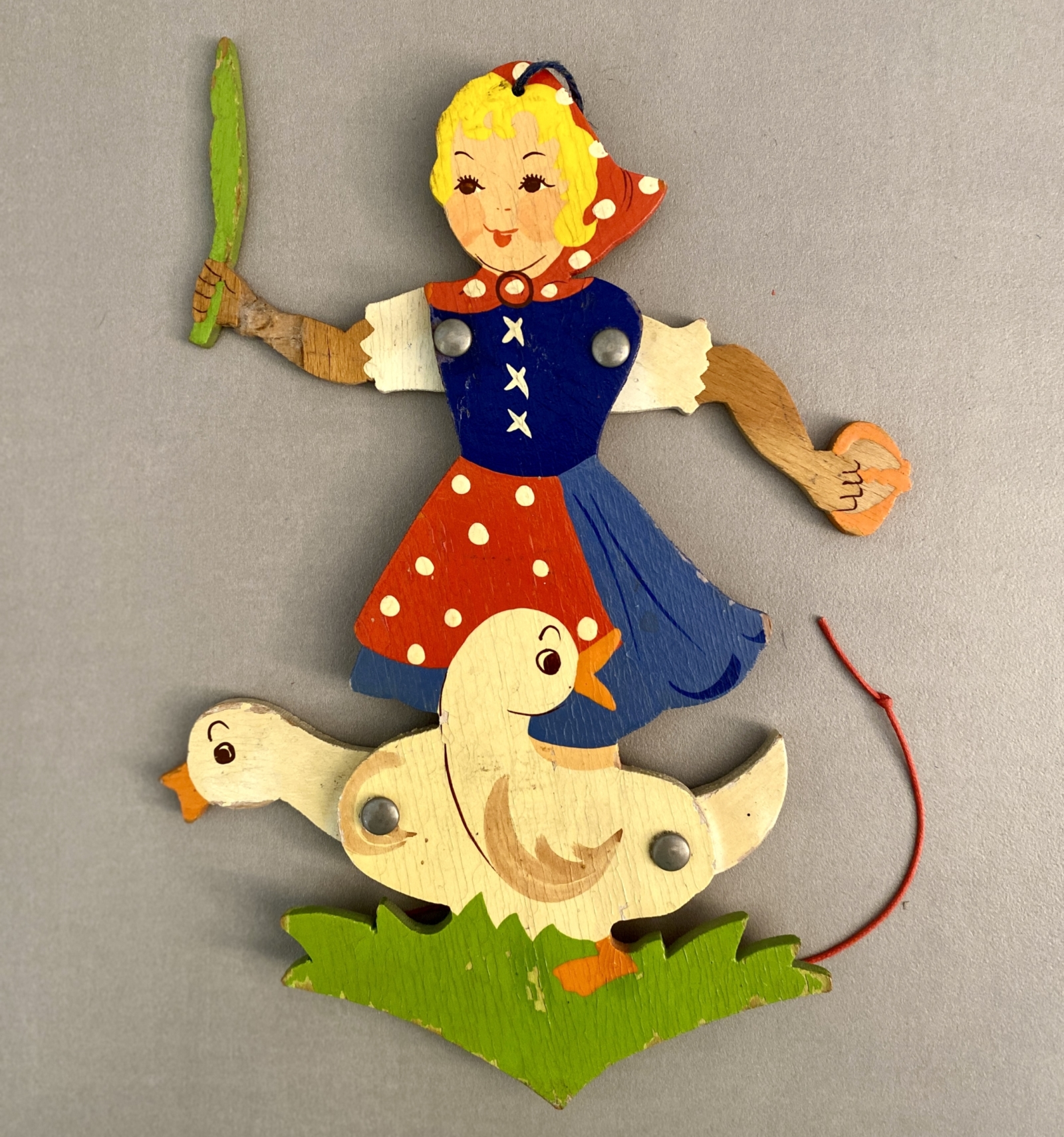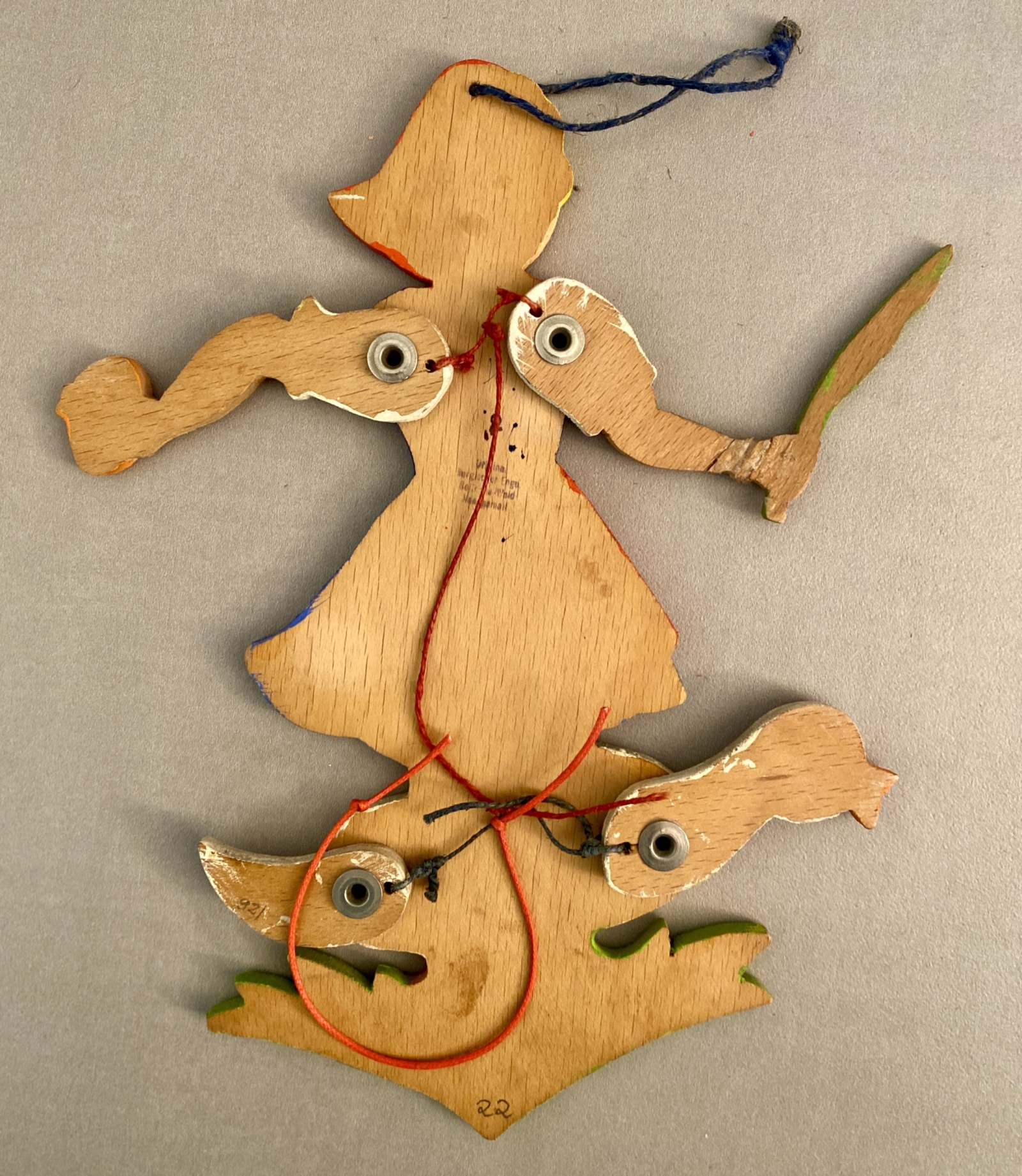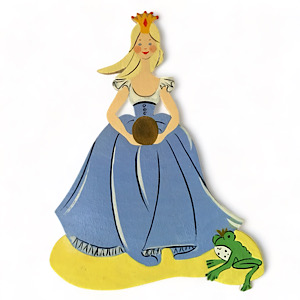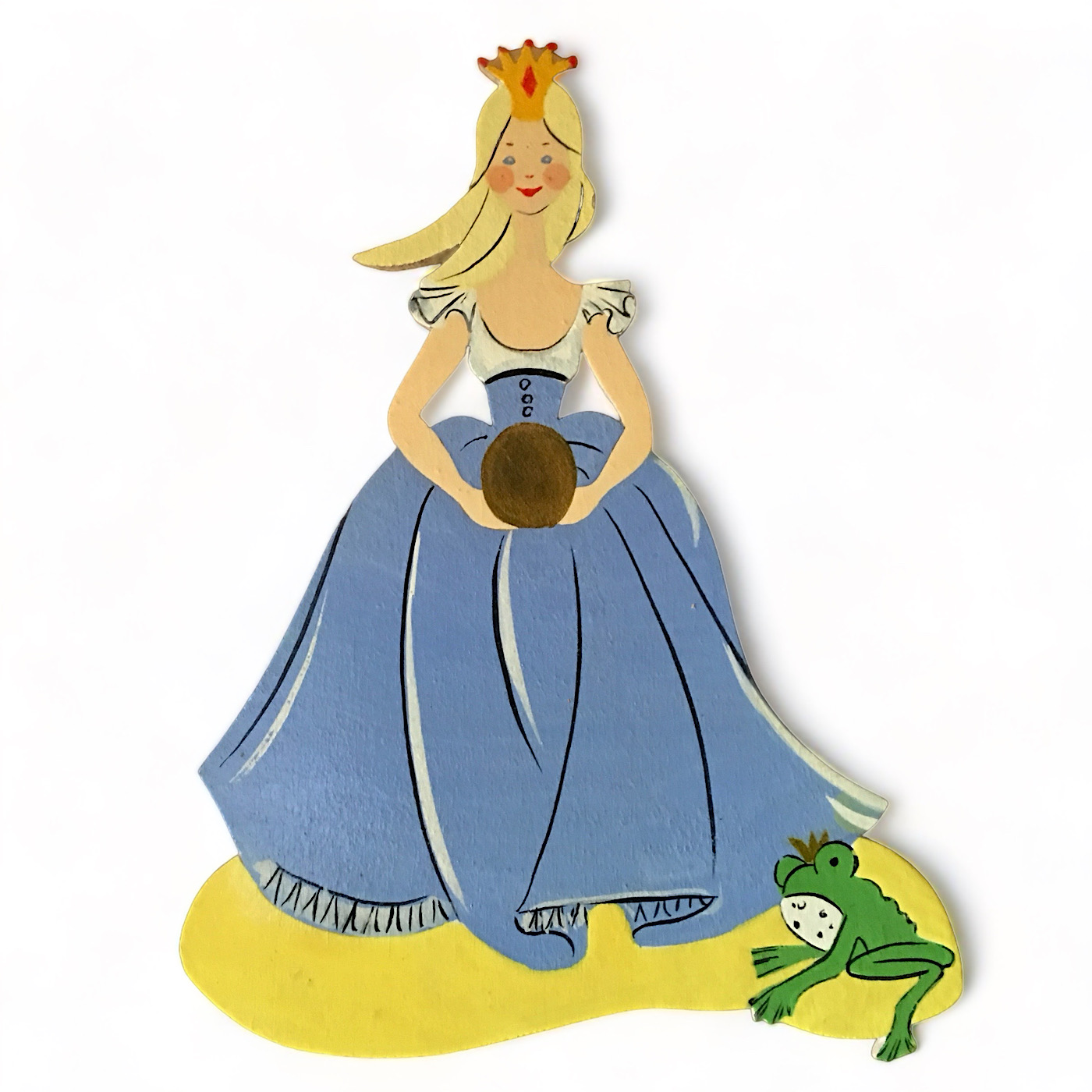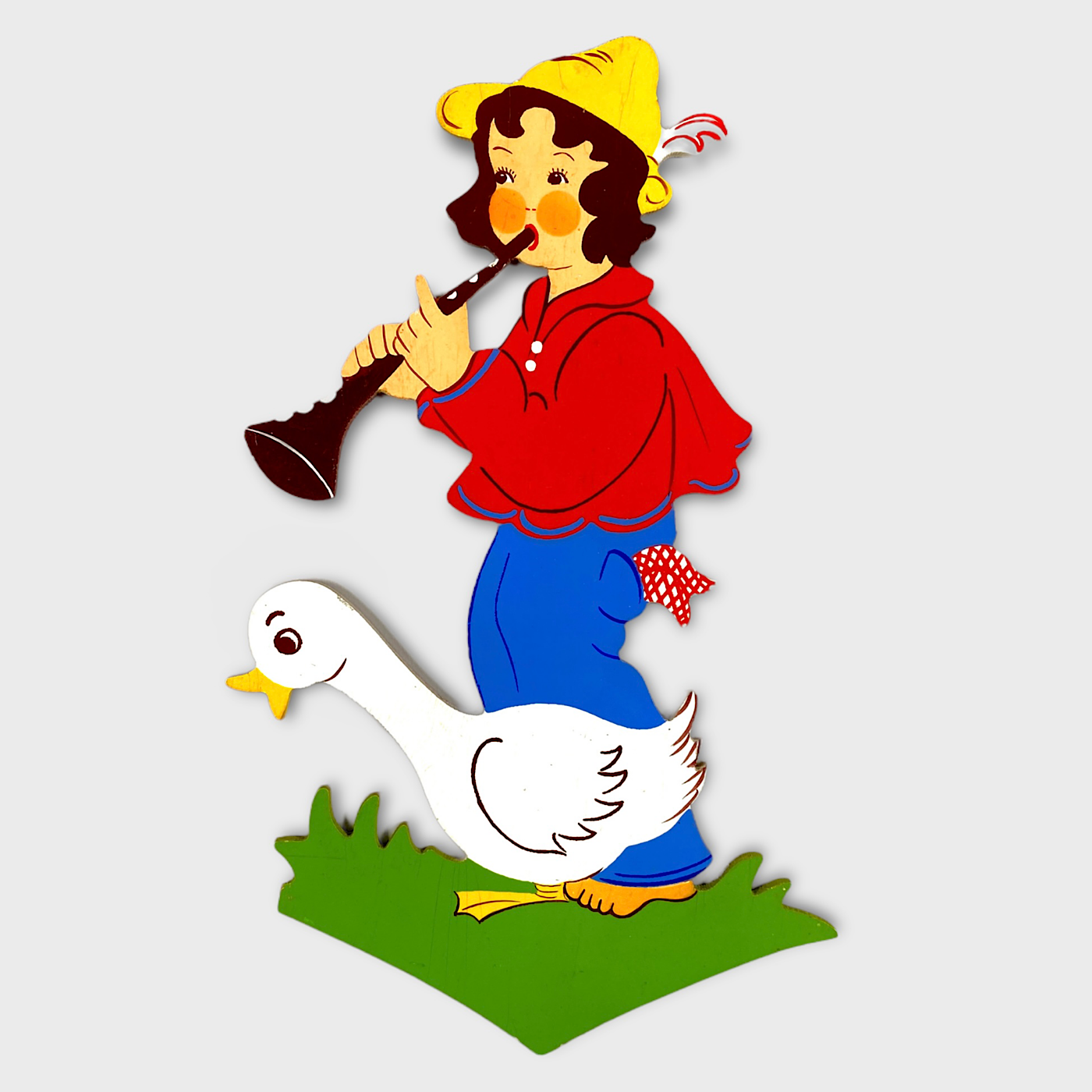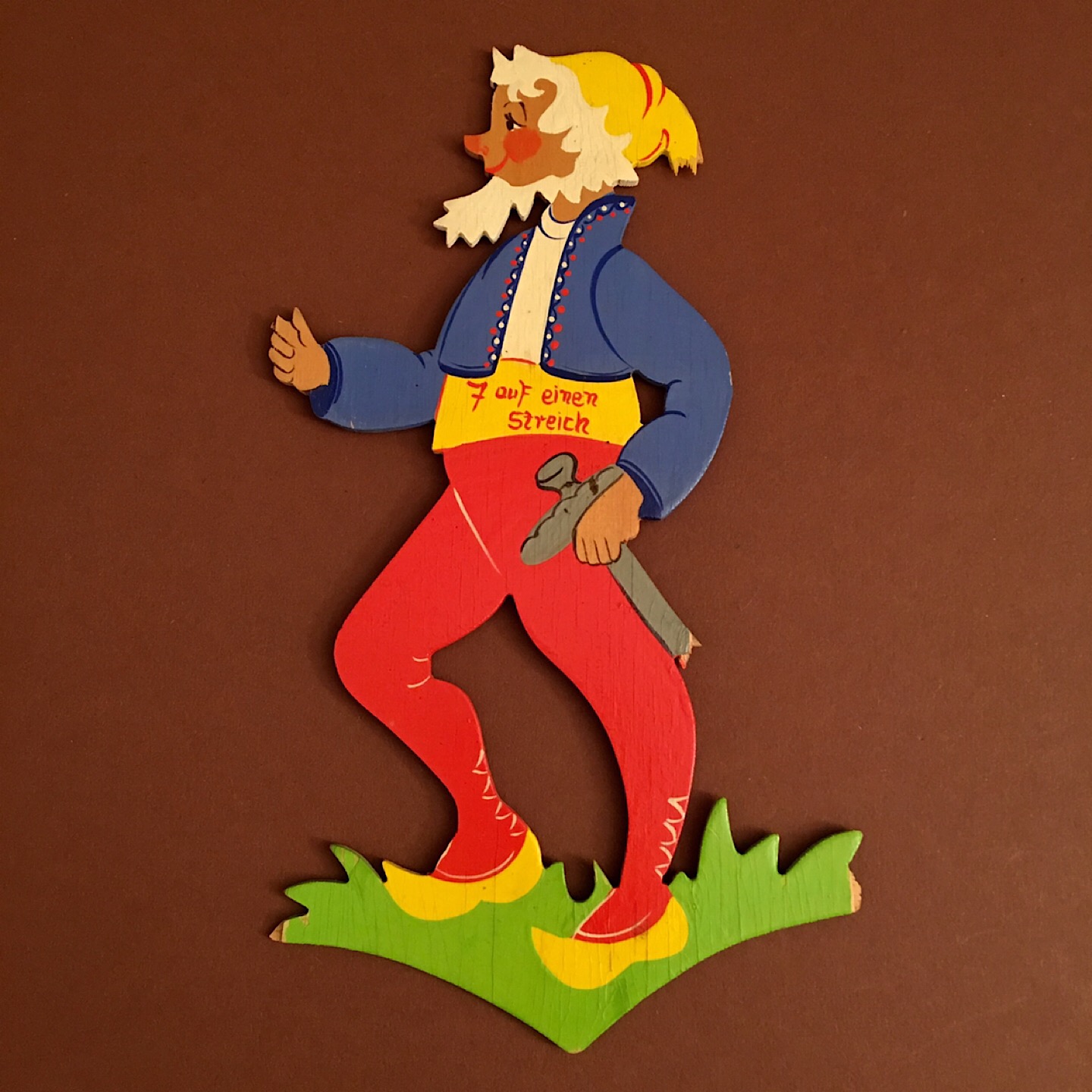1970er Grossmann Reit im Winkl: Kleiner Bussi-Bär mit aufgeklebtem Papier, Hampelmann 🇬🇧 1970s Grossmann Reit im Winkl: Small Bussi Bear with Applied Paper, Jumping Jack


GROSSMANN, HAMPELMÄNNER: Wie sehr viele andere Hersteller von Märchen-Holzbildern im letzten Jahrhundert hat auch Grossmann Reit im Winkl Hampelmänner hergestellt. Häufig waren die Motive Kasperle und Teddies, aber es gab auch Max und Moritz, einen witzigen Pinguin im Winterkostüm, Zwerge, Kinder und Weihnachtsmänner, die letzteren oft als Mini-Figuren. Diese Mini-Figuren waren sehr beliebt und typisch für Grossmann: Es gab den Osterhasen auf Skiern, aber auch mit Pinsel und Farbtopf. Die lustigste Figur ist wohl der Mini-Weihnachtsmann, der nicht nur Skier trägt, sondern aus dessen Jackentaschen sogar Spielzeug herausschaut, ein Schaukelpferd-Teddy und ein Zwerg mit winzigem Tannenbaum in der Hand. Auffällig sind auch die mit einem Papiermotiv beklebten Hampelmänner, auf deren Rückseite kein Name steht, die aber von Grossmann sein sollen.
🇬🇧 GROSSMANN, JUMPING JACKS: Like many other makers of German Wall Figures from the last century, Grossmann Reit im Winkl also made pull toys. The motifs were often the Kasperle (Mister Punch) and teddies, but also Max and Moritz, a funny penguin in a winter outfit, dwarfs, children, and Santa Clauses—often as mini figures. These mini jumping jacks were very popular and typical for Grossmann: There was an Easter Bunny on skis, and also one with a paintbrush and paint bucket. The funniest character is probably the mini Santa Claus who not only wears skis, but also has toys sticking out of his coat pockets—a rocking horse teddy and a dwarf with a tiny Christmas tree in his hand. Also striking are the jumping jacks with paper motifs glued to them; they never have a name on the back, but are said to be from Grossmann. (Buch/25)

